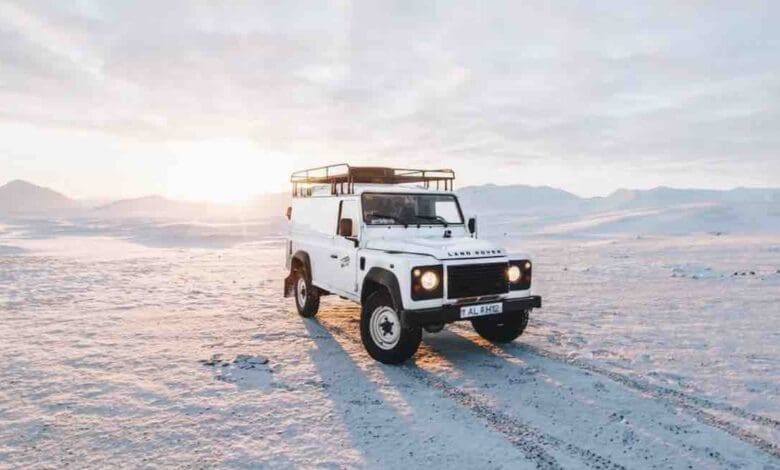
The right Overlanding vehicle will depend on what you want to do with it, where you plan to drive and how often you anticipate being on the road. There are many things to consider when selecting a car or truck for a long-term expedition, but these are some of the most important!
Vehicle Size
How much space do you need? One of the most important things to consider when choosing a vehicle for Overlanding is how much space do you need once all your gear and equipment are in. First, decide on what activities you will be doing with this vehicle. Will there be enough room for sleeping inside or will a rooftop tent be required? A Land Rover SUV might just be the right choice for you according to this car dealer in San Diego. Do you want an open cargo area to store extra fuel, water, and supplies? Some vehicles tend to have smaller 4×4 wheel drive options while others offer both types. The size of the doors can sometimes come into question if choosing a foreign-made vehicle where the driver and passenger doors are smaller than American or Japanese-made vehicles. This can be solved by choosing an SUV model rather than a smaller pick-up truck option.
Comfortable Interior & Suspension
If you plan on doing longer excursions, you will want to choose a vehicle with plenty of legroom and comfortable seats that are easy to take out in the event they need cleaning. A back seat is great for adding more storage space but can be uncomfortable if not folded down or removed entirely when not needed. Is there enough room for your legs to stretch while sitting in the front seat? Some vehicles may feel smaller than others due to their compact design. If this is the case, consider choosing an SUV which has ample head-and-shoulder room.
Do You Want Four Wheel Drive Or Two Wheel Drive?
Four-Wheel Drive (4WD) systems are typically designed for off-road and according to this car dealer, will offer the best control and traction than any other type of system. This is because most 4WD systems offer a transfer case that distributes power equally to all four wheels rather than just two with a 2WD option. A 2WD option will be cheaper to maintain but will not fair well in off-road activities. You are better off choosing a 2WD vehicle if you are looking for an exclusively on-road activity Overlanding vehicle. Not all four-wheel-drive vehicles are created equally. For example, a Nissan Xterra may not do as well in heavy snow conditions but can take you almost anywhere you need to go. Remember that this vehicle should support any outdoor activity such as camping, hiking, and fishing where there might be difficulties reaching certain areas due to bad weather conditions such as snow or mud. Think about what types of things you want to do with this vehicle before buying it.
Driving Requirements
Perhaps the all-time most important question you should ask yourself is, do I want to drive this car every day? If your answer is no, then perhaps choose a larger SUV made by companies like Nissan or Chevrolet that have enough room inside where it doesn’t feel claustrophobic while driving. It can be incredibly uncomfortable driving for long distances in any compact car especially when the roads get bumpy and require more steering corrections. This can tire out even the most experienced of drivers so take caution when choosing a smaller vehicle. Are you planning on driving both on-road and off-road? If your answer is yes, then a small SUV or pick-up might be the way to go.
Do You Need A High-Performance Vehicle?
You might want to consider more powerful vehicles if you plan on traveling through steep terrain or over difficult obstacles such as rocks. In some cases, it might be necessary for you to have enough horsepower to get up steep slopes without getting stuck in the mud or snow. Having extra torque at your disposal can also help when crossing rivers or deep streams where a speedy escape from rising waters may be necessary. You should also consider the wheel size of your vehicle. Larger wheel sizes help when crossing over bigger rocks and obstacles while a smaller wheel size ensures difficult terrains are not that much of a problem.
Every Overlanding vehicle is different so it’s important to understand the strengths and weaknesses of your options before buying one. The more research you do, the better prepared you’ll be if something breaks down in the middle of nowhere. Be sure to contact a reputable dealer for more information.
